#Steve Englehart Story
Explore tagged Tumblr posts
Text
#FANTASTICFOUR #310 (1988) #KeithPollard Cover & Pencils, #SteveEnglehart Story, 1st Appearance of Sharon Ventura as #SheThing "Things to Come!" Ms. Marvel Mutates into She-Thing https://www.rarecomicbooks.fashionablewebs.com/FantasticFour%203.html#310 @rarecomicbooks Website Link In Bio Page If Applicable. SAVE ON SHIPPING COST - NOW AVAILABLE FOR LOCAL PICK UP IN DELTONA, FLORIDA #RareComicBooks #KeyComicBooks #MCU #MarvelComics #MarvelUniverse #KeyComic #ComicBooks

#FANTASTIC FOUR#310 (1988) Keith Pollard Cover & Pencils#Steve Englehart Story#1st Appearance of Sharon Ventura as She-Thing#Rare Comic Books#Key Comic Books#DC Comics#DCU#DC#Marvel Comics#MCU#Marvel#Marvel Universe#DC Universe#Dynamite Entertainment#Dark Horse Comic Books#Boom#IDW Publishing#Image Comics#Now Comics
3 notes
·
View notes
Text
Already you can see some of the themes Steve Englehart seems to be laying out. At least, I see one. In order to blend in on earth, J'onn disguises himself as a standard, non-suspicious earth man (and standard in 1955 means a generic white male form). But then Doctor Erdel dies, leaving J'onn trapped in the paranoid, mccarthyist world of 1950s america. Also, I always forget how Martian Manhunter had such a prominent forehead protrusion in pre crisis comic books. (Justice League of America #144):


#martian manhunter#j'onn j'onzz#it's nice that steve englehart made martian manhunter the core founder of the team#this whole story revolves around him#justice league#justice league of america#jla#the justice league#dc#dc universe#dcu#dc comics#steve englehart#comic books#comics
7 notes
·
View notes
Text

My name is Professor Reinstein.
#captain america#steve rogers#professor reinstein#dr reinstein#origin story#flashback#steve englehart#sal buscema#marvel comics#comics#70s comics#bronze age comics
4 notes
·
View notes
Note
What would be your recommendations for someone trying to get into Wanda?
There is so much Lore™ with Wanda that they never stop bringing up that you're always going to have questions and be a little confused, no matter where I tell you to start. That said:
Scarlet Witch by James Robinson: The Complete Collection
Scarlet Witch by Steve Orlando Vol. 1: The Last Door
Scarlet Witch by Steve Orlando Vol. 2: Magnum Opus
Scarlet Witch by Steve Orlando Vol. 3: Scarlet Witch & Quicksilver
Vision & the Scarlet Witch: The Saga of Wanda and Vision
There was a time when the answer for where to start with Wanda was some very old, scattered issues of Avengers, and nowadays, I feel like the solo comics are a good place to start. The last one is a collection of comics from the 80's, but those stories are focused on her and Vision.
From there, you can try out Steve Englehart's run on Avengers. Busiek's too, I suppose. Various events, both recent and old. It's hard because sometimes, rather famously, Wanda, as a plot device, will be very important in a story, but then she's barely in the story. Like, she's comatose, she's off-screen, people are talking about her and she's not there. Which, I think, makes them weird to recommend for her, in spite of what it looks like on paper. If you want lore, you can just read a summary of the lore.
And also, those comics are not the best quality and contain many questionable writing decisions, far beyond the normal stuff you get in Marvel comics. I often have quibbles with the things I recommend, elements I have outdated and insensitive, but there's a big difference between that and Disassembled, which I would be hard-pressed to say anything positive about.
51 notes
·
View notes
Note
I associate you a lot with DC's Dr. Strange, hehe ^w^
So is it true that Dr. Hugo Strange is just as much of a weirdo as the other rogues? Because I thought he was originally this boring evil doctor guy, but it seems he has this weird thing for Batman????
What other weird quirks does this man have besides dressing up as Batman (and the weird Batman sex mannequin he has)?
Love your art, by the way!!!!!
Thank you for the ask!
Oh, he's definitely just as weird as the next rogue, even weirder than most in my opinion. I think the assumption that he's boring comes from the fact that most people don't bother to actually do any research into him. It seems most people get their idea of what this character is about from Batman: Arkham City and Batman: Legends of the Dark Knight #11-15 ”Prey” and that is a tragedy, because, in my opinion, neither of these are good takes on Hugo. When you go to his tag on this site every take is either ”guy standing around in a lab coat” or ”HE FUCKED A MANNEQUIN??” Tragic. When you actually start reading his stories you find he is actually a surprisingly complex and interesting character.
I'm not quite sure what would qualify as a weird quirk, but I gathered some interesting and freaky little moment in Hugo lore from Pre-Crisis canon. Pre-Crisis, because I just don't really care about Post-Crisis.
My personal favorite little piece of weird Hugo lore is that he canonically took nudes of himself sometime during Gerry Conway's run. I talked about it in the tags of this post and then later made a comic about it here.
Second freaky moment is him drugging and undressing Bruce TWICE during Steve Englehart's run. I posted about it here.
Third place is going to the fact that in his first appearance (Detective Comics #36 (1940)) he apparently just had a designated room in his hideout where he could chain people up and whip them. Normal. I'm surprised I haven't posted about this before, but I guess I just consider it's common knowledge considering it's his first appearance.
And I feel like I need to give at least an honorable mention to him sticking his finger in Bruce's mouth mid battle in Batman #356 (1983). I posted about it here.
Second honorable mention goes to that scene in Detective Comics #471 (1977) where we see Hugo getting undressed and Magda with her shirt half open and then Batman crashes in and Hugo starts frantically getting dressed and Magda buttons her shirt. I can always tell when people haven't done their research into this character when they start having takes like he can't get laid. I'm looking at you Doug Moench.
Anyway, that's all I can think of right now.
13 notes
·
View notes
Text
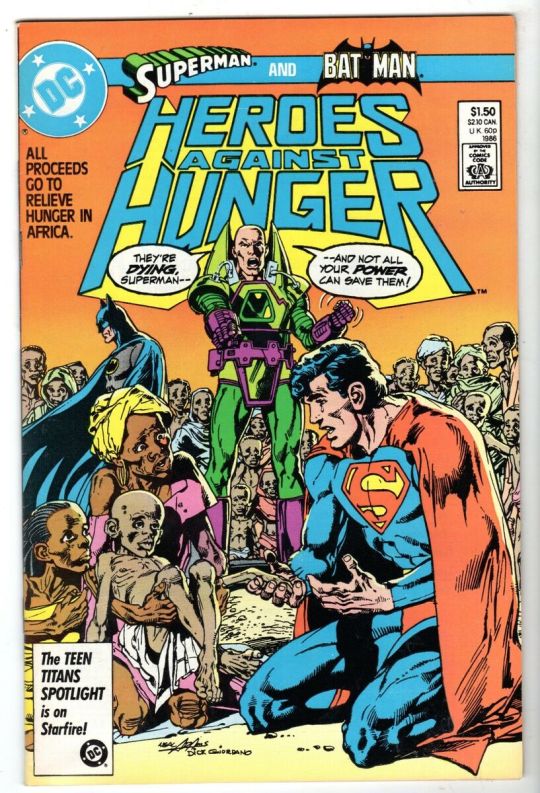
In 1986, DC Comics followed in the footsteps of the music industry and their group projects "Do They Know It Christmas?" and "We Are The World," producing a benefit comic where all proceeds were donated to charity to help with the hunger crisis in Africa.
Spearheaded by Jim Starlin and Bernie Wrightson, Heroes Against Hunger #1 featured the work of 100 contributors in a story about Superman, Batman and Lex Luthor trying to relieve hunger in Ethiopa. Creators who participated included John Byrne, Howard Chaykin, Cary Bates, Steve Englehart, Klaus Janson, Mindy Newell, Michael Kaluta, Steve Leialoha, Al Milgrom, Gray Morrow, Bill Sienkiewicz, Walt Simonson, Marv Wolfman, George Perez and many more. Neal Adams and Dick Giordano did the cover.
(Not incidentally, the comic followed the Heroes for Hope X-Men comic from Marvel, which Jim Starlin and Bernie Wrightson also spearheaded).
#heroes against hunger#superman#batman#lex luthor#comics#comic books#comics to remember#dc comics#dc#neal adams#dick giordano
29 notes
·
View notes
Text
0129: Doctor Strange (vol. 2) #5
Cover Date: December 1974 On-Sale Date: September 10, 1974

And we come to the end of the first arc of our new Doc solo series. Sadly this is Frank Brunner's swan song as he leaves Doc, never to return. It's sad. Fortunately Gene Colan returns to art chores next issue. Doc died last issue and returned to life in the last few panels. Let's see what he does with it and what he does to Silver Dagger.
Clea is still a prisoner of Silver Dagger who is still attempting to break and "reform" her from the teachings of her demonic former instructor. Clea calls him mad and he replies he's as sane as anyone, proving it by comparing himself to Cotton Mather and members of the Inquisition. Yeah, that proves your sanity! Because it's what villains do and maybe Steve needed to burn a few pages of real estate, Dagger expounds on his origin!
In a nutshell: Dagger-to-be was a priest in the Catholic Church who worked his way up to cardinal. He expected to become pope but someone else was elected. For reason this makes Dagger-to-be in his own words "comprehend the power of evil." It sounds to me more like he's the ultimate sore loser. Brunner has some odd ideas about clergy vestments. Here's Dagger-to-be as a cardinal.

Here's the pope that's about to die wearing I don't know what.

Dagger-to-be goes wandering around in a fog until he stumbles into the Vatican forbidden library. He reads and reads and believes God has a new mission for him. To stamp out black magic with black magic. To me this is like fighting pornography by making hardcode blue movies, but what do I know? By the way, Brunner's Vatican Library has some cool books.

H. P. Lovecraft would be amused in-between his thoughts about European superiority. Dagger-to-be searches out mystic practitioners, learns all he can from them and murders them. He went to find the Ancient One but the old dude was already dead. For some reason Brunner draws the crypts of Kaa-U instead of the lamasery at Kamer-Taj. Did Dagger-to-be get his addresses mixed up?

Clea has now fainted. We don't know if she heard Dagger's entire story, but it doesn't really matter. While Dagger is distracted by Clea's current state, something slips out of the nearby All-Purpose Amulet of Agamotto. It's Doc! In through the Orb, out through the Amulet. Hey, maybe Dagger stealing it was a good thing! Doc doesn't have to travel.

Doc's senses have expanded and he's having one gnarly trip and it's without the aid of LSD!

This is definitely one time where eccentric panels work like a charm! Doc tries to find his body, but instead finds the wax figure Dagger decapitated a few of issues ago. He's confused and enters it anyway. He actually manages to get it going, despite like things like muscles.

Kicking the head is a nice touch. Doc-figure creeps up on Dagger and this is a truly marvelous image.

Dagger cuts the wax-figure to pieces, but Clea suspects more is at work here.

Doc "surges" into Clea. I think Englehart was perfectly aware of the double entendre he wrote! Together the two escape Dagger and flee back to the Sanctum Sanctorum. Steve and Frank even give us bystanders gawking at Clea's kooky outfit!
Clea/Stephen arrives back at the Sanctum and they ask Wong if Doc's body is still there. He answers in the affirmative while we look in on Dagger in hot pursuit. Dagger is not exactly thrilled about being mugged along the way.

Back at the Sanctum, Clea/Stephen asks why the body is still here and Wong says he couldn't bring himself to make the journey to Kaa-U. He probably dreads having to dig the place out with he bare hands after the place collapse in Marvel Premiere #10. He also mentions, that Doc doesn't have the usual dead body smell. Doc rejoins his body which, fortunately isn't really dead.
Dagger has arrived and he is so focused on Clea he hasn't put the clues together that Doc might still be alive. Dagger burst into the study with Doc and Clea. Frank gives us some great, cinematic panels.

After his poor aim, Dagger uses the Amulet to attack Doc and Clea. The pair manage to take over the eye. Clea remarks that she's able to to this much easier now. Doc "surging" into her appears to have increased her power. The pair point the Eye at Dagger who is suddenly filled with wisdom (or something) and jumps into the Eye!

The ordeal over, Doc and Clea share a tender moment. Guess where Dagger is?

The caterpillar has an eternal conversation partner!
And those we close the arc! Sadly it's Frank's final turn on Doc except for a one-shot in 2010. He has really been spectacular. Next issue Gene Colan restarts his long association with Doc. He will have a pair of runs that will end with issue #47. He returns for one more issue in the successor series.
This is a charming finale. There's so much at stake, but as in previous stories, these high stakes are told in an intimate tale with a small cast. Steve manages to communicate Dagger's insanity both through his origin and his actions. The man is loony! Doc hangs onto Dagger's dagger and Chris Claremont even remembers it, although it functions a bit differently. I'll get to that one in a couple of months.
Doc shows why he is sorcerer supreme. He approaches Dagger after he invades the Sanctum with a combination of caution and confidence. His absolute faith in Clea is on display here as well. There are some minor glitches I pointed out above but they don't distract from the larger story. A well done finale from one of my favorite creative teams.
#doctor strange#doctor strange reviews#stephen strange#clea#wong#silver dagger#agamotto#steve englehart#frank brunner
8 notes
·
View notes
Text
Unraveling the Legacy: Steve Englehart's Impactful Journey at Marvel Comics

In the intricate tapestry of comic book history, certain creators stand out as architects of enduring legacies. Among them is Steve Englehart, a prolific writer whose imaginative storytelling and nuanced characterizations have left an indelible mark on the Marvel Universe. Throughout his tenure at Marvel Comics, Englehart crafted narratives that transcended the confines of the page, breathing new life into iconic characters and redefining the landscape of superhero storytelling
Early Career and Arrival at Marvel
Before his ascent to prominence at Marvel, Englehart honed his craft through various ventures in the comic book industry. His journey towards the House of Ideas began with a passion for storytelling and a keen eye for character dynamics. Upon joining Marvel Comics, Englehart quickly distinguished himself with his inventive approach to superhero narratives, earning him a place among the company's top writers
Captain America: Redefining a Patriotic Icon
Englehart's tenure at Marvel is perhaps best remembered for his transformative run on "Captain America." Englehart embarked on a daring exploration of patriotism, identity, and the moral complexities of heroism during his time on the title. Through Captain America's lens, Englehart crafted compelling narratives that resonated with readers on a profound level
One of Englehart's most acclaimed story arcs, "The Secret Empire Saga," remains a seminal moment in Captain America's history. Englehart delved into the heart of America's political landscape in this epic tale, confronting societal issues with unflinching honesty. The storyline culminated in a shocking revelation that shook the foundations of the Marvel Universe, leaving a lasting impact on Captain America's legacy

Exploring Other Marvel Characters
While Englehart's tenure on "Captain America" garnered widespread acclaim, his creative influence extended far beyond the Star-Spangled Avenger. Englehart's work on the relationship between the Scarlet Witch and the Vision, two of Marvel's most enigmatic characters, stands as a testament to his ability to infuse depth and complexity into his narratives. In "The Vision and the Scarlet Witch" miniseries, Englehart explored the intricacies of their unconventional romance, navigating themes of love, identity, and acceptance in a superhero context
Additionally, Englehart's contributions to other Marvel titles showcased his versatility as a storyteller. From the cosmic adventures of The Avengers to the mystical realms of Doctor Strange to the brutal Avengers/Defenders War, Englehart's narratives spanned the breadth of the Marvel Universe, enriching the tapestry of interconnected stories

Creative Collaborations and Artistic Vision
A hallmark of Englehart's work is his collaborative spirit and his ability to synergize with artists to bring his vision to life. Throughout his tenure at Marvel, Englehart forged lasting partnerships with some of the industry's most talented illustrators, resulting in visually stunning and narratively rich comics. From the dynamic pencils of Sal Buscema to the ethereal landscapes of Frank Brunner, Englehart's collaborators imbued his stories with a visual dynamism that elevated his narratives to new heights

Critical Reception and Legacy
Englehart's contributions to Marvel Comics have not gone unnoticed, with fans and critics alike lauding his innovative storytelling and memorable characterizations. His work continues to resonate with readers, standing as a testament to the enduring power of comics as a medium for storytelling
In the annals of comic book history, Steve Englehart's legacy shines brightly as a beacon of creativity and imagination. His groundbreaking contributions to the Marvel Universe have left an indelible mark on the fabric of superhero storytelling, inspiring generations of creators to push the boundaries of the medium. As we continue to celebrate his achievements, we are reminded of the transformative power of storytelling to inspire, to provoke, and to unite us in our shared love of comics
Conclusion

Steve Engelhart is a titan in the comic book world, yet his contributions often reside in the shadow of more mainstream characters. His legacy is woven into the fabric of Marvel, shaping the narratives of both obscure and iconic figures alike, from the Avengers to the enigmatic Scarlet Witch and Vision
In the annals of Marvel history, Engelhart stands as a trailblazer, setting the stage for future writers who would helm the sagas of Captain America and the Avengers. Mark Grunwald's tenure bears striking resemblance to Engelhart's, a testament to the enduring themes of politics and cosmic exploration inherent in these titles
Engelhart's storytelling prowess shines particularly bright in Captain America, where political intrigue and global conspiracies intersect, birthing characters like Shang Chi. While rooted in martial arts, Shang Chi emerges as a pivotal figure in Marvel's tapestry, navigating the murky waters of SHIELD and HYDRA with aplomb

Amidst the tumult of the 1970s comic scene, Engelhart rose as a beacon of innovation, his work becoming synonymous with the decade itself. Remarkably, he achieved this without the crutch of marquee titles like Spider-Man or the Fantastic Four, solidifying his place as an unsung hero of the Marvel Bronze Age
Steve Englehart's tenure at Marvel Comics is a testament to storytelling's transformative power. Through his imaginative narratives and compelling characterizations, Englehart reshaped the Marvel Universe, leaving an indelible mark on the landscape of superhero comics. As we reflect on his legacy, we are reminded of the enduring impact of his creative vision and the timeless allure of his storytelling prowess
References
Captain America: The Secret Empire Saga
The Vision and the Scarlet Witch
The Avengers: The Celestial Madonna Saga
Doctor Strange: A Separate Reality

#steve englehart#marvel comics#marvel in the 70s#captain america#the avengers#the defenders#doctor strange#shang chi
15 notes
·
View notes
Text
A Completely Unbiased and Totally Comprehensive Beast Reading List, Pt. 1

As a member of the first class of X-Men, the intelligently gifted Dr. Hank McCoy has been fighting for the peaceful coexistence between mutants and humans for most of his life, under the tutelage of Professor Xavier. Born with an enhanced physique, strength, and muscular structure, he has adopted the name Beast.
Well, hello there, friends! Welcome to a completely unbiased, totally comprehensive, not at all too long reading list that aims to show you the story of everyone's favourite Beast, from start to finish!

Origins
As one of the original X-Men, Beast features in almost every issue of the very first iteration of the team - but to put it bluntly, 60s X-Men sucks, and I want you to enjoy this character, so we're going to start with some aggressive curation.
X-Men Origins: Beast, by Mike Carey - a solo story that retells Hank's origins, including his pre-X-Men life, and an insight into his mindset, his relationship with humanity, and his first meeting with the X-Men. It also happens to have some rather lovely art, and a fantastic last page spread that expresses a lot of what makes Hank a brilliant character. X-Men: First Class, by Jeff Parker - a collection of mini-series that fill in the gaps between stories in the original run of Stan Lee and Jack Kirby's X-Men, this run is extremely readable, and does a very good job of forming a cohesive characterisation of both Hank, the X-Men, and, particularly, Professor Xavier. You do not need to have any former knowledge of anything X-Men to read this run. Issues of Particular Note: (2006) #8; the meeting of Hank and Gorilla Man, who have a cute dynamic, and if you like Gorilla Man, you should read Agents of Atlas by Parker as well. (2007) #4; the foundation of Hank's friendship with Bobby Drake, aka Iceman. These two were thick as thieves all the way up until the late 00s. Giant-Sized Special; a collection of short fun little stories with varying art styles, featuring Hank on small solo adventures or in duos with the other X-Men. Finals #2; Hank deciding to leave the X-Men, and become his own man.
X-Men: Season One by Dennis Hopeless is a standalone graphic novel that aims to retell the early days of the X-Men from the perspective of Jean Grey, and features Hank fairly prominently. If you want to be more up to code on early X-Men history without dealing with issues of the 60s run, this would be a good place to do it.
And of course, Uncanny X-Men vol. 1. While I would not advise reading this run in its entirety, dipping your toe in to get some appreciation for what 60s comics were like and how far we've come isn't an awful idea. Issues of Particular Note: #7 Hank is momentarily abducted by a beatnik foot cult. No notes, this is just a funny situation that Hank ends up in. #8; one of the first instances of anti-mutant hysteria in an X-Men book, the first time Hank left the X-Men, and also the origin of his short career as a professional wrestler. #47; Hank and Bobby go on a double date with their girlfriends and get interrupted by superhero shenanigans.

Grey
With Hank having now left the X-Men, he has a rendezvous with destiny, and while this is going to be a very short period on our reading list, it's a very formative one for young Hank.
Amazing Adventures #11-17, by Gerry Conway, Steve Englehart, and Arnold Drake. Honestly, just read this entire run - you basically get a very well contained story that delves into Hank at a very young age, and while this may be a series from the 1970s, it's actually surprisingly modern in its approach to Hank as a character. It's also interesting to see the introduction of a more horror/wolfman aspect to Hank's character, which is largely due to the contemporary popularity of Werewolf-by-Night. It all caps off with issue #17, which collects a number of back-up stories that originally came from Uncanny X-Men, that tell Hank's origin in its uncondensed form. If you started with Carey's Origins book, these story beats will be very familiar, but it's interesting to see what parts were cut and which were preserved.
A companion story that goes back and revisits this very interesting period of Hank's life can be found in X-Men Unlimited vol. 2 #10, as one of the two stories contained there. Sliding somewhere in between issues of Amazing Adventures, it provides a modern emotional context for Hank's transformation, and I feel obliged to warn you that this is a very heavy story. If stories about depression, radiation sickness, or familial death are triggering for you, approach with caution.

Avengers
As you may have noticed, Hank has now changed from grey to his more familiar blue! This is due to printing limitations of the time, where attempts to render black or grey often ended up producing a shade that looked closer to blue. But enough of that malarkey, let's talk about everyone's favourite Bouncing Baby Blue Beast!
Avengers vol. 1, by . . . so many writers, but the most significant include Jim Shooter, Gerry Conway, Steve Englehart, David Michelinie, Bill Mantlo, etc. As the first X-Man to cross teams, Hank made history, and he quickly settled in nicely to the bitchy, high octane, absolutely bonkers world of 70s Marvel. Among other things, this is where he forms lifelong friendships with Carol Danvers, Steve Rogers, and, perhaps most importantly, Simon Williams. Honestly, this entire run has its ups and downs, but I'd recommend reading it from start to finish, just because it's fun, and Hank is so much fun in it. If you're more used to buzzkill Beast from the modern era, you'll be shocked at just how much of a kind-hearted goof he is here. Although, maybe skip the Korvac Saga. Issues of Particular Note: #137, which features Hank's initial tryout for the Avengers, with some story beats that will have particular resonance if you read Amazing Adventures or X-Men Unlimited, recommended above. #141, which sees the beginning of the origins of Patsy Walker, who you might know better as Hellcat, and who will become an important part of our story later. #148, which sees Hank embrace his disguise gimmick - while pretty much abandoned from this point on, it was arguably never going to get better than the trick he pulls here. Avengers Annual #6, which sees the origins of Hank and Simon's wonder-ful relationship. Whether you read them as friends or more, it really is a ton of fun to see just how quickly they glom onto each other as partners. #160 digs a little deeper into Hank's dynamic on the Avengers, and, if you aren't doing a full readthrough, this provides an interesting perspective on what Hank brings to the team, which is paid off in #163 and #164. Can you guess what it is? Yep . . . sex symbol. This is the origin of Hank McCoy, original mutant fuck machine, baybeeee. #171 sees Hank speaking Latin, being kind of a shit to Ms. Marvel, and being called a slut by Thor, which is kind of amazing, tbh. But Hank then proceeds to disappear for a bit, dodging the really rather awful Korvac Saga, so if you want to read more about our boy, you can jump right ahead to #178, where they make up for his brief absence by psychologically torturing him! Yeah! Love it! Next big issue of note is #188, where the Avengers get political, Hank gets to hold Ms. Marvel's laser gatling gun backpack, and press his nose against a plane window like a small child (it's better than I'm making it sound)! #194 has Hank at his best, to be quite honest, and is an all around nice little slice of life, quiet issue for the Avengers, for those of you who miss such things in comics. #206 features Hank speaking every language he knows for an entire issue, on . . . well, honestly, not even a dare, he just does it. #209, meanwhile is . . . heavy. Trigger warnings for the Shoah, the Holocaust, concentration camps, and a lot of dark subject matter, but it does showcase Hank at arguably his most heroic and his most tender. And then, finally, we reach the end of Hank's tenure with the Avengers, at #211, where . . . well, honestly? He leaves because his boyfriend is leaving. There's no other way to interpret it, that's just the text. He'll of course join the Avengers again, and is always active as a reservist, but for now, he's to move on to greener, more defensive pastures. In between these appearances, it's also worth checking out the absolutely iconic Dark Phoenix Saga. If you think you know this story from the adaptations in X-Men 3 or Dark Phoenix, trust me, you don't - this is the real story, as it should always have been. Hank only joins in on the story in the last third, but if you ever doubted his commitment to the X-Men, his friends, or the ideals of justice, look no further. And guess what, it's just a damned good story, starting at Uncanny X-Men #129 and going on to #138.
Hank also makes guest appearances in Uncanny X-Men #111 to #114, where he first properly meets the second generation of X-Men, though as you'll see, it's far from the most orderly or normal of introductions. For those of you who don't know about Chris Claremont and his predilections, you will learn - great writer, absolutely fundamental to the X-Men, but . . . hoo boy.
That's what I've got for you for the moment! I will be adding the next sections as separate posts, so that this doesn't get too long - feel free to check back here, or just keep your eyes peeled in the Hank McCoy tag, so that you don't miss the next section, as we move into the 80s proper! Also, I may be adding new issues here and there, as I remember things, so check back if you want to hear more about Beast's early years!
First || Next || Last
#outofmuffins#hank mccoy#henry mccoy#reading list#marvel comics#x-men comics#I promised I would do it!
39 notes
·
View notes
Text
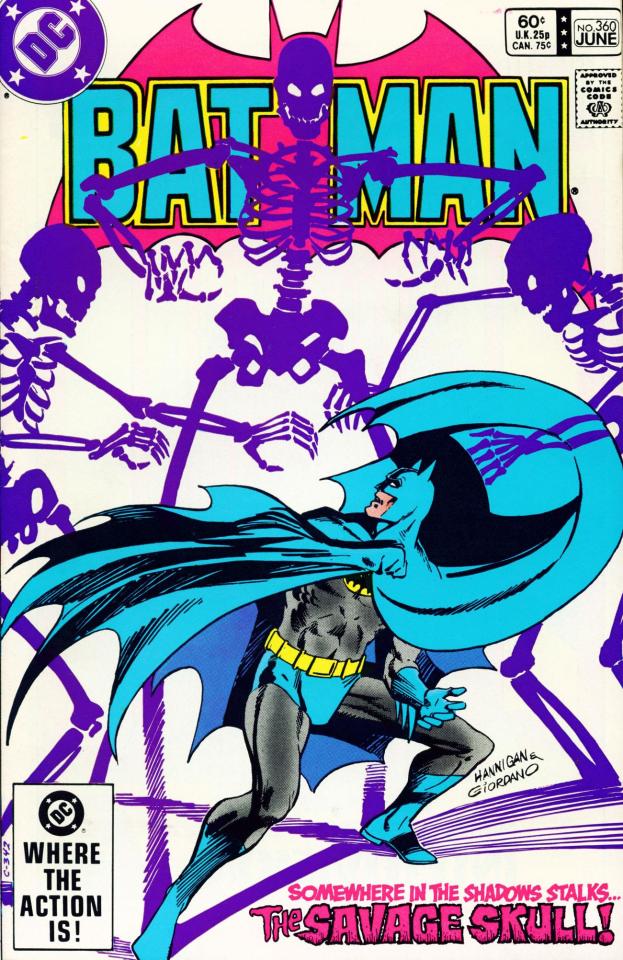

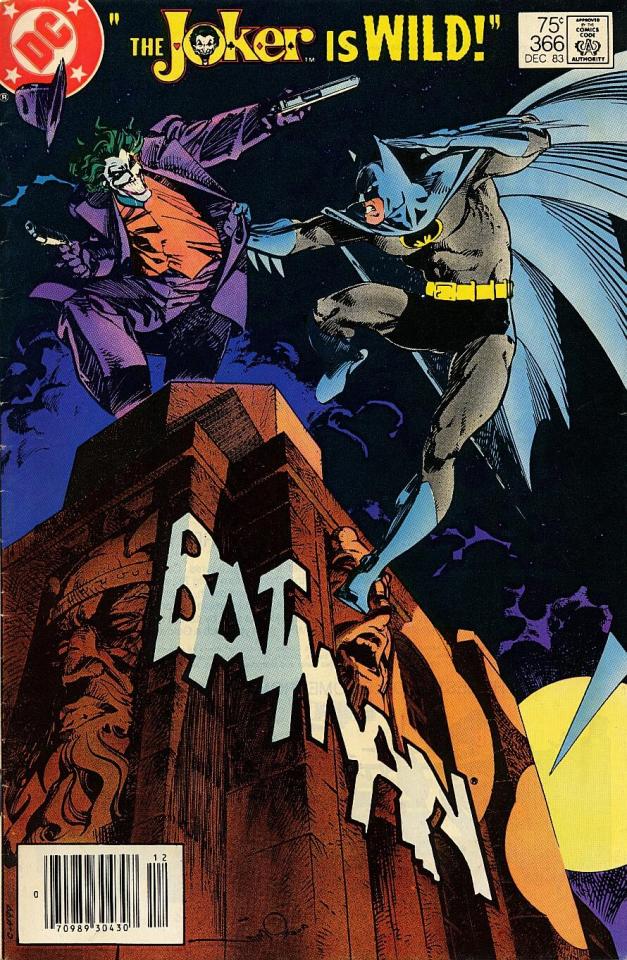

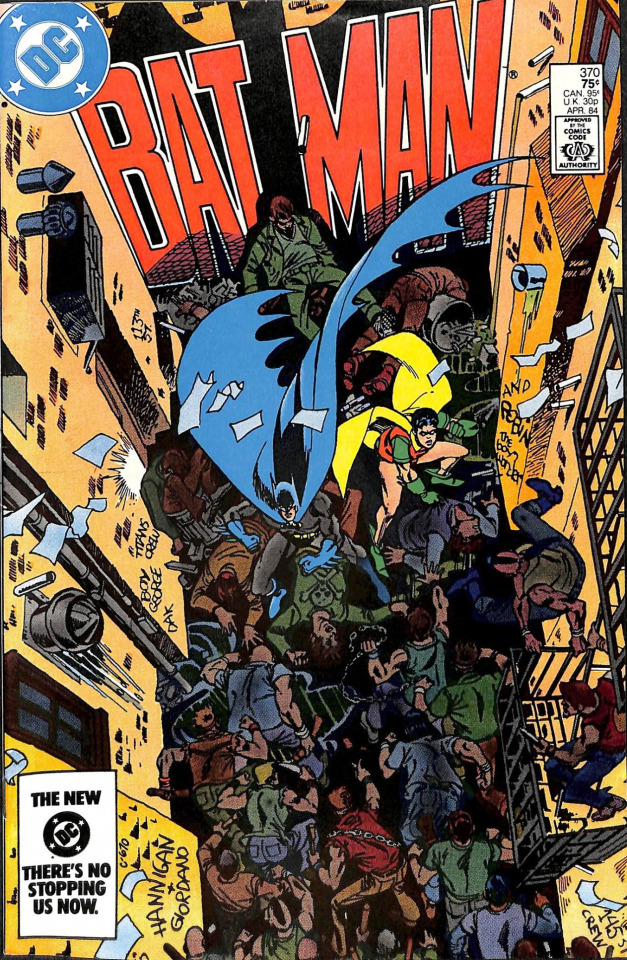


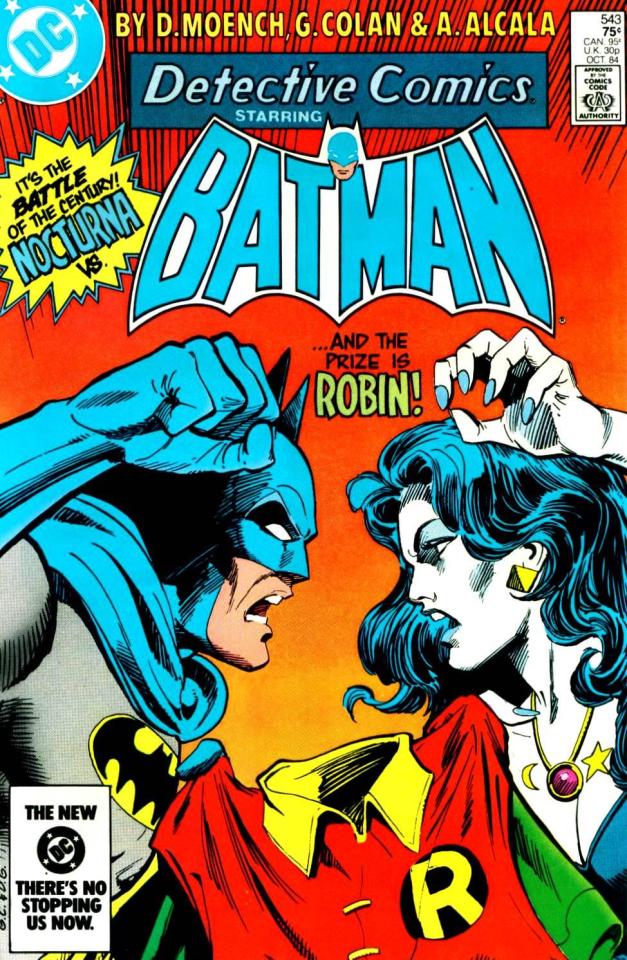
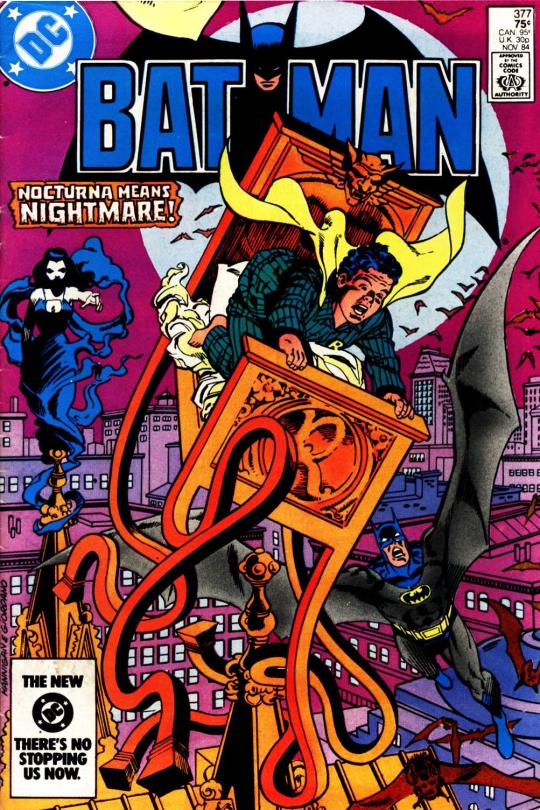
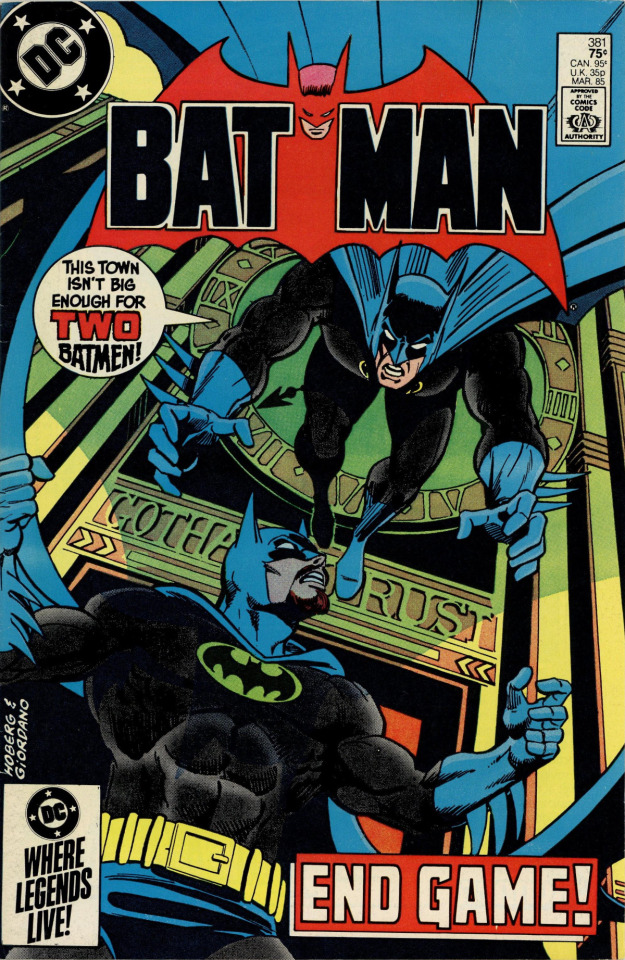
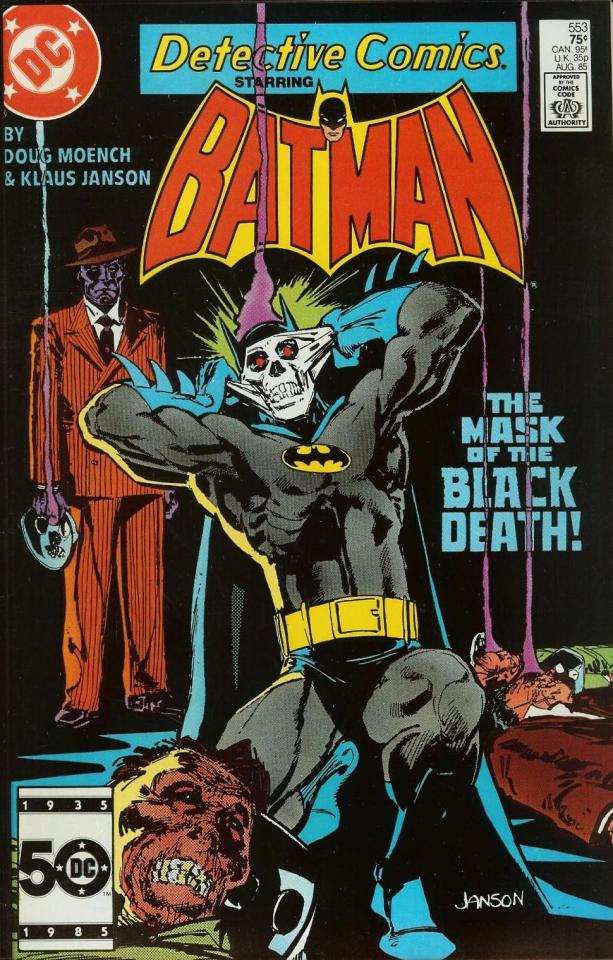

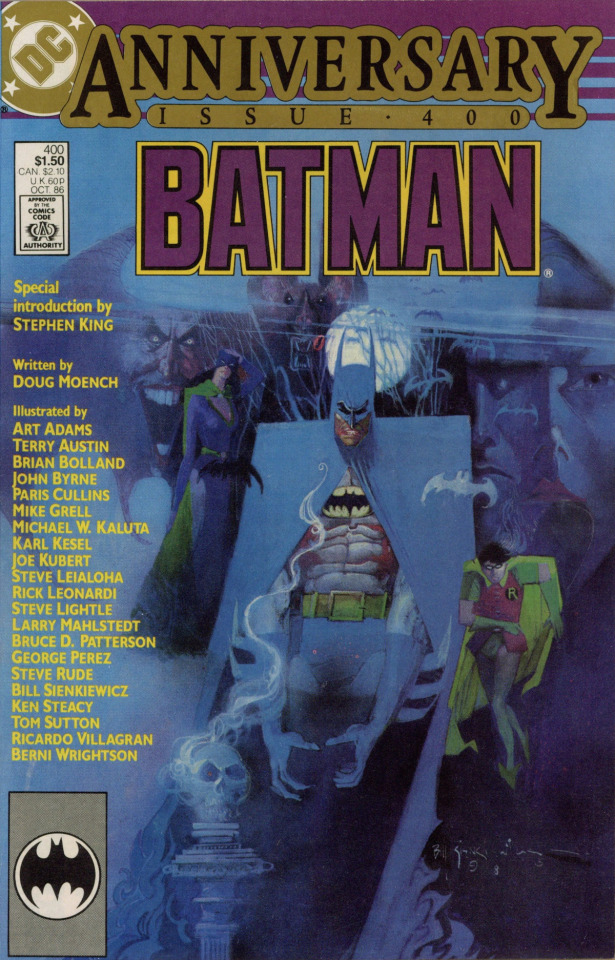
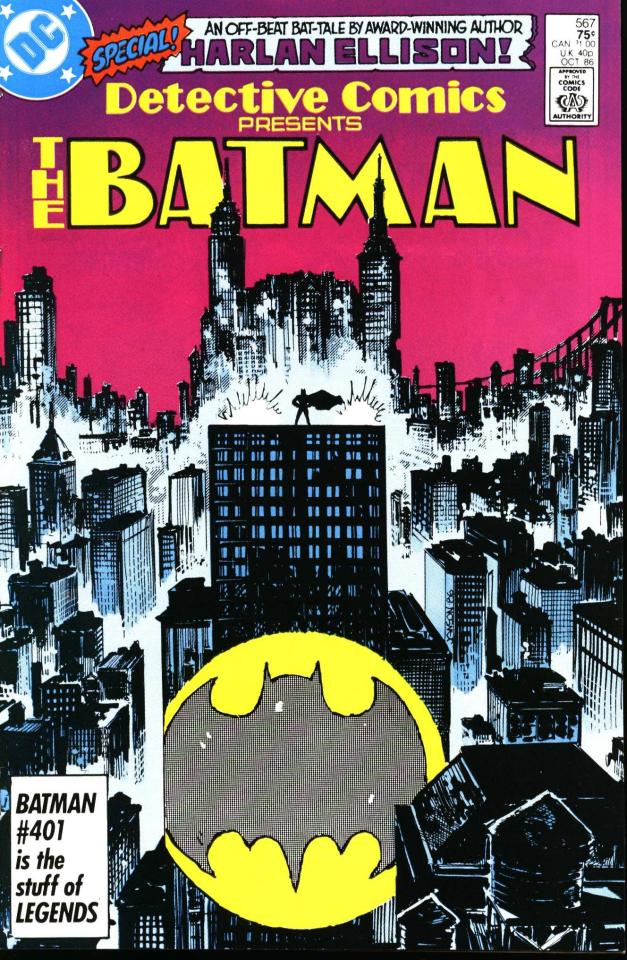
July 1983 to October 1986. In 1983, DC lured Doug Moench away from Marvel and books like MASTER OF KUNG FU and MOON KNIGHT to take over BATMAN and DETECTIVE COMICS under the editorship of Len Wein. Their run, which lasted 40 months, was the final phase of the Bronze Age Batman continuity; although it continued for some months after the end of CRISIS ON INFINITE EARTHS, everything through DETECTIVE COMICS #566 and BATMAN #400 is functionally part of pre-Crisis continuity, in particular most anything to do with Jason Todd becoming the second Robin. (Jason debuted during the end of Gerry Conway's run in early 1983, but it was Moench and Wein who oversaw Jason's actually becoming Robin.)
From 1981 to 1986, there was a tight continuity between BATMAN and DETECTIVE COMICS: a story begun in one book would continue in the other two weeks later. This was something new for Batman; there had been occasional multi-issue storylines for years, and Steve Englehart and Len Wein had introduced a certain amount of Marvel-style continuity in the late '70s, but having around 40 story pages per month allowed more room for character-driven stories, supporting characters, and subplots. When Doug Moench arrived, a central focus was on leading up to Jason Todd becoming Robin, but there were also numerous other major and minor subplots, from Alfred's attempts to connect with his adult daughter, Julia Remarque (introduced by Conway in 1981), to Gotham's messy city politics and various deadly underworld power struggles.
In MASTER OF KUNG FU, Moench's signature storytelling preoccupation had been "kinky weirdos hurting each other's feelings," and his initial run on the Bat-books also featured a series of messy, sometimes bloody romantic triangles, the most important of which involved Batman; the now-reformed Catwoman; Nocturna (Natalia Knight), a pretentious Goth burglar who attempted to adopt Jason Todd; and Nocturna's adoptive brother Anton, who became a cat burglar out of deranged obsession with Natalia and later tried to kill her so no one else could have her. It was all very grandiose and inevitably somewhat florid, but then expecting gritty, understated realism from a comic book about a man who fights crime dressed as a bat is itself pretty silly.
The strongest story in this run actually has little to do with that soap opera: "What Price the Prize?" in BATMAN #372, is an intelligent, grounded drama about an up-and-coming young Irish boxer maneuvering for a bout with a Black champion obviously inspired by Muhammad Ali, featuring some of Don Newton's finest Batman art; the conclusion in DETECTIVE #539 isn't quite as sharp, but is still one of Moench's best. Other highlights include a clash with Catman (BATMAN #371/DETECTIVE #538) in which Thomas Blake's determined belief in the magical power of his costume nearly gets both him and Batman killed over and over; a wistful story about the private life and hidden depths of boorish Harvey Bullock (DETECTIVE #549); a delightful one-shot (BATMAN #383) in which Batman repeatedly tries and fails to get some sleep; the debut of Black Mask (BATMAN #385–386 and DETECTIVE #553); a comedic tale of Batman and Catwoman on an actual date, in costume (BATMAN #392); and a distinctly '80s-Bondian espionage adventure reuniting Moench and artist Paul Gulacy (BATMAN #393–394).
Artistically, the run got off to a good start with Don Newton on BATMAN (inked by Alfredo Alcala) and Gene Colan on DETECTIVE (generally inked by Bob Smith). Newton's departure in 1984 hurt, leading to a period of artistic musical chairs and some really bad early Pat Broderick art, followed by Tom Mandrake taking over BATMAN. Mandrake gets a bad rap in some quarters, mostly because his style is looser (and about two steps further in the direction of Gene Colan) than many comics fans care to tolerate, but his work here is mostly fine, and certainly an improvement over Broderick's. The Annual has some very nice early Denys Cowan pencils, inked by Alcala, and BATMAN #400 is an all-star extravaganza art-wise.
Maddeningly, DC has never properly reprinted a lot of this material, which I think is badly overdue. If it's not as epochal as some more familiar periods both before and after, the median level of quality is pretty decent (and certainly no worse than the 1987–1991 period, which has now been reprinted in its entirety); its emphasis on characterization wouldn't be matched again in the Batman titles for many years. Denny O'Neil supposedly hated much of what Moench had done (Moench has said O'Neil especially loathed Nocturna, whom he flatly refused to revive in any form), but Denny is dead now, and in any case, his Batman stories include their share of stinkers as well as gems. I don't know that DC has any kind of real reprint strategy anymore, but I hope they won't wait until Doug Moench is dead to properly remaster and collect these issues. Doing them all (BATMAN #360–400 and Annual #10, DETECTIVE #527–567) in something akin to Marvel's Epic Collection format would probably take four volumes — there's around 1,800 pages of material, more if you include Moench's Superman/Batman stories from WORLD'S FINEST — but why not?
#comics#batman#detective comics#doug moench#ed hannigan#dick giordano#gene colan#klaus janson#harlan ellison#jason todd#nocturna#natalia knight#black mask#roman sionis#len wein#master of kung fu#paul gulacy#don newton#alfredo alcala#bob smith#tom mandrake#batromance#batcat
33 notes
·
View notes
Text











Conan the Barbarian Annual #3 -January 1977-
"Beast From the Abyss" based on the story "Black Abyss" by Robert E. Howard
script by Steve Englehart
art by Howard Chaykin
18 notes
·
View notes
Text
FANTASTIC FOUR #305 (1987) Ron Frenz and Joe Sinnott Cover, Steve Englehart Story, John Buscema Pencils, Joe Sinnott Inker
#FANTASTICFOUR #305 (1987) #RonFrenz and #JoeSinnott Cover, #SteveEnglehart Story, #JohnBuscema Pencils "All in the Family!" Torch vs. Thing! 'NUFF SAID! https://www.rarecomicbooks.fashionablewebs.com/FantasticFour%203.html#305 @rarecomicbooks Website Link In Bio Page If Applicable. SAVE ON SHIPPING COST - NOW AVAILABLE FOR LOCAL PICK UP IN DELTONA, FLORIDA #RareComicBooks #KeyComicBooks #MCU #MarvelComics #MarvelUniverse #KeyComic #ComicBooks

#FANTASTIC FOUR#305 (1987) Ron Frenz and Joe Sinnott Cover#Steve Englehart Story#John Buscema Pencils#Joe Sinnott Inker#Rare Comic Books#Key Comic Books#DC Comics#DCU#DC#Marvel Comics#MCU#Marvel#Marvel Universe#DC Universe#Dynamite Entertainment#Dark Horse Comic Books#Boom#IDW Publishing#Image Comics#Now Comics
3 notes
·
View notes
Text
I can't read The Avengers past Issue #141. I can't do it. Hellcat is a decent character, but her origin gets to me. I can't handle how all the old Patsy and Hedy humour comics get retconned to be fictional stories inside the Marvel universe. If I was a kid who enjoyed those comics back in the day, I would've been so offended by that. Also, I hate Beast with fur. I like Beast with fur in TV shows and even in Lego games and stuff, but I hate it for the comics. I spent so long reading the first 57 original X-Men issues, and I got attached to Beast looking human! I got used to it, and I don't think Hank would have liked the change either! He didn't like how people judged him by his apperance in the early X-men comics (if i recall correctly). So it feels super wrong that he'd just meekly accept all this lying down.
Also, Hawkeye not being on the team makes The Avengers stop being fun. Beast isn't good comic relief, because I hate 70s Beast. And Hawkeye brought me my comic relief and sense of fun, but he's gone. So his loss is felt way, way too deeply. In other words, The Avengers become unreadable after 1975. Absolutely unreadable. I don't even know if i want to read their crossovers with other comics; I dislike them that much.
#the avengers#avengers#they had a mostly good 140 issues#but i can't go beyond that#I can't do it#hawkeye#clint barton#beast#hank mccoy#hellcat#patsy walker#marvel#marvel comics#anti steve englehart#after he's done with mantis#his stories go downhill#the avengers are awful after the mantis saga#marvel universe#reading comics#old comics#70s comics#comics#comic books#comic
4 notes
·
View notes
Text

We shall call you Captain America, son!
#captain america#steve rogers#dr reinstein#origin story#flashback#steve englehart#sal buscema#marvel comics#comics#70s comics#bronze age comics#dat rack
3 notes
·
View notes
Note
This is a well-timed question since I recently saw someone say Wanda is a Virgo and had the most ?????? reaction of my life. (Fun fact: Vision is a Virgo in 616.)
How do you know Vision's zodiac sign? Is there an official date for his birthday? Creationday?

Avengers vol. 1 #135; story: Steve Englehart; art: George Tuska; inks: Frank Chiaramonte; lettering: John Costanza; coloring: George Roussos
Virgo Vision confirmed. Just ignore the sliding timescale of it all.
17 notes
·
View notes
Note
What are you currently reading? Any suggestions for someone who is trying to indulge in some older batman runs?
Thank you for the ask!
I recently read Under the Hood for the first time! Then that inspired me to read A Death in the Family again. I wrote a little tag essay about these stories actually, but then didn't post it lol. And then I randomly read Detective Comics #388 ”Public Luna-Tic Number One” (1969) again, which I did post about. Oh, and before that I was reading random Alan Grant issues from the 80s/90s. And also I'm still trying to get through every single Pre-Crisis Lex Luthor issue in chronological order lol xDDD I'm currently in the year 1983. I've also been meaning to read Steve Englehart's run again, because my Hugo fic heavily references it and I wanted to make sure I wasn't forgetting anything about it.
Alright! Now, I don't know exactly what does ”old” mean to you. I mean, some people could consider comics from the 90s old, but to me those are very modern. I'm just gonna talk about Pre-Crisis (1938-1986), because that's what I'm most familiar with. I don't really know nor care about Post-Crisis that much. Aaaaaaaaaaand. I have actually made a list before for Pre-Crisis issues that I'd consider essential right here. It's not a definitive list, I've left out a lot of big issues and put in quite a few personal indulgences, but over all I still think it's an ok list. But you asked about runs so...
Actual runs, at least how we've come to know them, didn't really start until the 70s, I think. Continuity did start somewhere in the 60s though and from then on we do have longer stories like the Outsider saga and Dick leaving. Steve Englehart's run (Detective Comics #469-476 (1977-1978) is the first story that I see people calling a ”run”. It's on my previous list and I'm definitely going to recommend it again lol xDDD It's classic for a reason. And after that the only ones that that I'm personally familiar with are Gerry Conway's and Doug Moench's runs. Gerry Conway's run I'd 100% recommend! I'm not entirely sure what issue could you consider the run starting from, but to me Detective Comics #503 "Six Days of Scarecrow" (1981) is the first issue and Detective Comics #526 "All My Enemies Against Me!" (1983) is the last. It's all collected in Tales of the Batman: Gerry Conway. I loved it personally. It's my favorite Batman run there is <3 And a lot of it is illustrated by Don Newton, who's my favorite Batman artist! And Dough Moench's run? Eeeeeeeeeeeeeeeeeeeeeeeeeh. I'll admit, I didn't finish it. It was just so boring DDDx I wouldn't say it was bad, but Moench is not one of my favorite writers lol. I'm going to try and finish it at some point though, because I do want to see how Hamilton Hill's story ends. The run picks up right after Conway's run in Batman #360 ”When Slays The Savage Skull...” (1983) and ends in Batman #400 "Resurrection Night!" (1986). It's the last Pre-Crisis Batman run. It doesn't seem to be collected anywhere, though.
Anyhow, I felt like adding some fun individual Pre-Crisis stories that I really enjoy that I couldn't really put on that older list of mine :333 These are not in anyway big or important stories, just stories that had that special something in my opinion :3
Detective Comics #76 (1943) "Slay 'em with Flowers" Joker being Poison Ivy before Poison Ivy was created <3 This is something that I really like about early Batman. They had so few villains they had to give them themed capers that would've later been given to villains with that actual theme. Kinda like how Hugo was being Scarecrow before Scarecrow was created (Detective Comics #46 (1940)). Also I just really love the art in this <3 It's so lively and flowy. You can see raw scans of the inks of this story in a book called Jerry and the Joker: Adventures and Comic Art. I wouldn't say the colors ruin the inks, but I do think they look nicer without the colors.
Detective Comics #180 (1952) "The Joker's Millions" From since around the 70s every time a writer decides to write a Joker story, they seem to think it has to be BIG. He has to do something HUGE and EPIC. ”The Joker's Millions” continues to be one of the best Joker stories of all time, because all he tries to do in this issue is just pay his damn taxes.
Batman #74 (1952) "The Crazy Crime Clown!" Interesting Joker issue, because this is the first time he's ever in a mental hospital. Golden Age Joker was perfectly sane and it wasn't until the 70s when they made him officially mentally ill, but it's interesting to already see them toying with the idea this early on.
Batman #179/2 "The Riddle-Less Robberies of the Riddler" (1966) First time Eddie's riddle obsession is looked at as anything other than just a silly quirk.
Superman's Girl Friend Lois Lane #70-71 (1966-1967) Selina turns Superman into a fukcing kittyyyyyyyyyyyyyyyyyyyyyyyy. Penguin is here too, I guess.
Batman #200 ”The Man Who Radiated Fear” (1968) Super cute Scarecrow story that includes a couple other villains as well <333 Nothing much more to say. Just a good time!!!!
Detective Comics #377 (1968) ”The Riddler's Prison-Puzzle Problem” A very classic Riddler story <333 I also base my Riddler's psychical appearance on this issue. If they still did stories like this at DC today, I might actually start reading current issues again. Like truly when was the last time we got an actually classic Riddler story? Just a one issue long story where he sends Batman a riddle he's going to rob a bank and then Batman stops him? I miss it when stories were allowed to be small and the characters were just allowed to be themselves, instead of some grimdarktwistedthis'llknockyoursocksoff re-imagining. I love how Eddie gets thrown around in this one <333 His ass looks amazing in this issue <3 Also his hair looks very cute when it's messy <33
Wolrd's Finest Comics #177 (1968) "The Duel of the Crime-Kings!" One of my favorite Joker stories <333 I really think Joker peaked in the late 60s. Really, I think most characters peaked around then. You can probably tell by how many late 60s stories I put on this list.
Batman #210 "The Case of the Purr-Loined Pearl" (1969) I am obsessed with this girl group. All of them iconic. All of them stars. They exist in my verse, too.
Detective Comics #388 (1969) ”Public Luna-Tic Number One” Another one of my favorite Joker stories. They are toying with the mental illness one in this as well with Batman's ”the problem will be whether to put you in prison -- or in an asylum!” quote. Also my Joker's psychical appearance is based on this issue.
Batman #258 "Threat of the Two-Headed Coin" (1974) Fist appearance of Arkham Asylum - or Arkham Hospital as it was called then. I don't know why I didn't put this on my previous list. It should definitely be on there. A Two-Face story.
Batman #291-294 ”Where were you on the night Batman was Killed?” (1977) Here's a slightly longer story. All of my boys and girls are so cute in this <3333 I love it when they are able to get along and also when no-one is above anyone. Yes, some are more popular than other's but they still all feel equal.
Batman #326-327 "This Way Lies Madness", "Asylum Sinister" (1980) Professor Milo story!!!! Yippeeeeeeee!!! I love that you can see day to day life at Arkham!!! Also this is the issue where Milo becomes an Arkham patient.
Detective Comics #503 ”Six Days of the Scarecrow” (1981) A good Scarecrow story. Also the first time he's admitted to Arkham and it's not because of mental illness, but because he suffered an overdose. The overdose saga continues in Detective Comics #526 (1982) where he is still very ill and Jervis takes advantage of his vulnerable state. And then in Batman #373 "The Frequency of Fear" (1984) and Detective Comics #540 "Something Scary" (1984) he's finally recovered. I don't think it's mentioned in these issues whether he was taken back to prison or Arkham once he was captured, so it seems unclear whether or not Pre-Crisis Scarecrow ever became a permanent Arkham patient.
Detective Comics #510 ”Head-Hunt by Mad Hatter” (1982) Technically the second appearance of Jervis, because this is the issue where imposter Mad Hatter and the Jervis we know and love today were split into two characters. Also my favorite Jervis story :333 I base my version's physical appearance on this story :333
The Brave and the Bold #183 ”Let's play... The Death of Batman” (1982) Riddebat shipper's dream comic lol. Just an all around good story!! Love how Eddie is written!! It's so fun. The art is not very good though. The artist had no clue how he wanted to draw Riddler so in some panels he's literally Bruce's identical twin and then in other panels he'll have a completely new face.
Batman #356 ”Double life of Hugo Strange” (1983) My favorite Hugo story <3333 ((((Actually I admit Engelhart's run has kinda started to rival this tbh)))))))) But this one is illustrated by Don Newton so there's that. First time ever we see him without the beard btw! And more importantly this is the issue where he starts wanting to be Batman.
9 notes
·
View notes